Holywell Green Viaduct
Holywell Green Viaduct
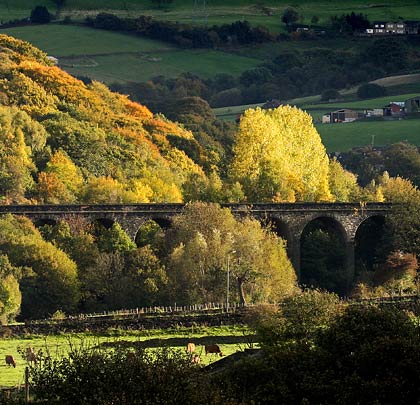
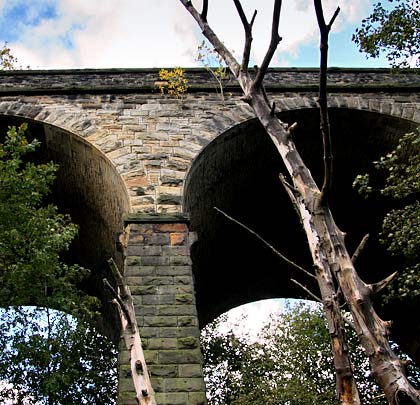
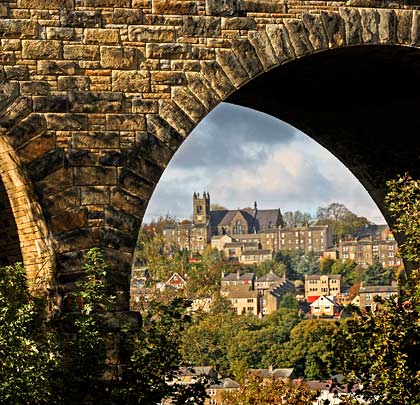
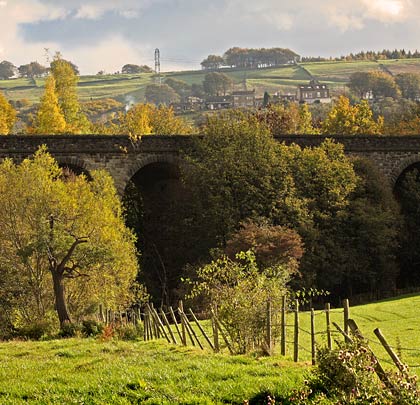
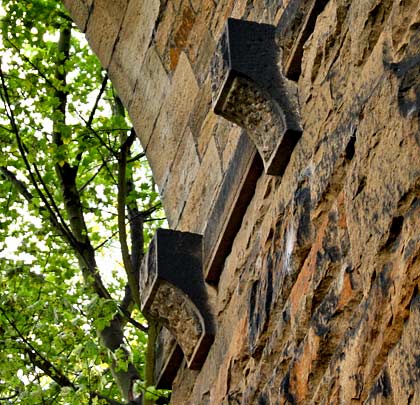
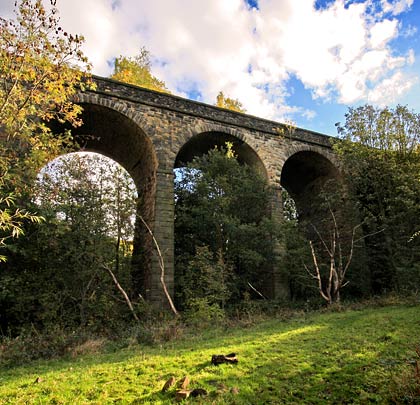
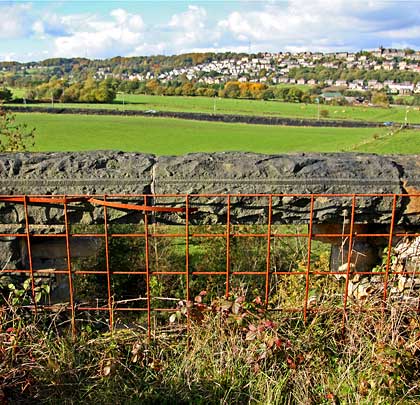
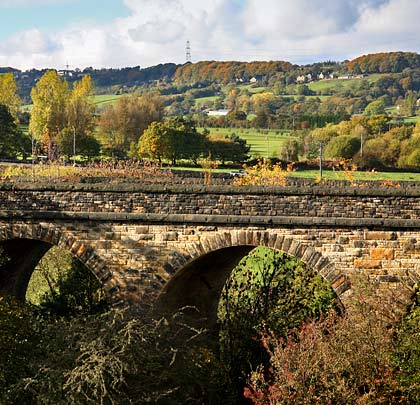








Only 1¾ miles long, the Stainland branch was built by the Lancashire & Yorkshire Railway to serve a collection of woollen mills, with coal and yarn heading up the valley and worsted cloth making the return trip. Two stations served passengers: the Stainland & Holywell Green terminus and West Vale, opening on 1st January 1875.
A railmotor service was introduced over the branch in 1907, three years after which a halt was added at Rochdale Road. However the passenger service was unable to compete when trams eventually reached Stainland, resulting in its withdrawal in 1929. Goods however continued to be carried until 14th September 1959.
Engineered with two tracks at a cost of £140,000, the line climbed a steep gradient – 1:60 for much of its length – and demanded two considerable viaducts, both of which were granted Grade II listings in June 1983. The northernmost, at West Vale, is the longer of the two but the other, called Stainland, incorporates more spans – 14 of them, extending in total for 179 yards and curving slightly to the east at its southern end.
On 5th February 1873, during the viaduct’s construction period, mason James Kilderry fell from it into Holywell Brook below, and was killed instantly.
The viaduct is entirely stone-built, with each pier topped with a neatly masoned bedstone. Supports for the arches’ timber centring are also extant. Some sections of the parapets, which are topped with substantial copings, have been lost but the structure is in a generally fair condition.







